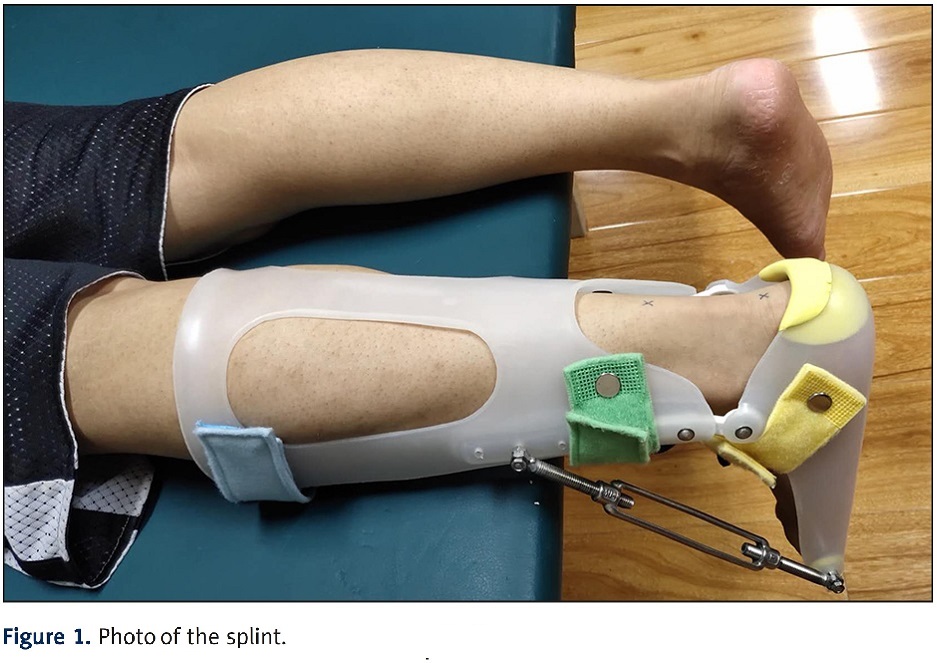Publications

Objective Assessment of Regional Stiffness in Achilles Tendon in Different Ankle Joint Positions Using the MyotonPRO
Authors: Tian-Tian Chang 1, Ya-Nan Feng 2, Yi Zhu 3, Chun-Long Liu 4, Xue-Qiang Wang 1, Zhi-Jie Zhang 2
Affiliations:
- Department of Sport Rehabilitation, Shanghai University of Sport, Shanghai, China
- Rehabilitation Therapy Center, Luoyang Orthopedic Hospital of Henan Province, Orthopedic Hospital of Henan Province, Luoyang, Henan, China
- Department of Musculoskeletal Pain Rehabilitation, The Fifth Affiliated Hospital of Zhengzhou University, Zhengzhou, Henan, China
- Clinical Medical College of Acupuncture, Moxibustion and Rehabilitation, Guangzhou University of Chinese Medicine, Guangzhou, Guangdong, China
Journal: Medical Science Monitor - October 2020, 26:e926407 (DOI: 10.12659/MSM.926407)
-
Field & Applications:
- Medical
- Clinical trial
- Musculoskeletal disorder
- Injury prevention
- Musculoskeletal rehabilitation
- Reliability
Background: Achilles tendinopathy commonly occurs in specific regions of the tendon, and Achilles tendon stiffness can be related to local pathological changes in the tendon. The MyotonPRO is a new handheld device that conveniently assesses stiffness of muscles and tendons. This study aimed to 1) evaluate the intra- and inter-rater reliability of stiffness measurements of the Achilles tendon at different ankle positions, 2) investigate the modulation of stiffness at different ankle joint angles, and 3) examine the differences between 2 regions of Achilles tendon stiffness.
Material and Methods: Thirty healthy young adults (15 men and 15 women) participated in this study. The regional Achilles tendon stiffness at 0 cm (AT-0) and 6 cm (AT-6) above the tendon insertion were evaluated by the MyotonPRO in the neutral position and 10° dorsiflexion of the ankle joint. Measurements of stiffness were taken by 2 raters on the first day and 5 days later. The stiffness data were compared by repeated measures analysis of variance (ANOVA).
Results: The intra- and inter-rater reliability of stiffness measurements at AT-0 and AT-6 for each ankle position were good (all intraclass correlation coefficients >0.84). A significant modulation of Achilles tendon stiffness was obtained at different ankle joint angles (P<0.05). Stiffness at AT-0 was higher than at AT-6 (P<0.05) in both positions.
Conclusions: These results suggest the MyotonPRO reliably assessed Achilles tendon stiffness and monitors its modulation, and tendon stiffness increased with ankle dorsiflexion. Stiffness was also nonuniform along the length of the tendon.
Keywords: Achilles Tendon, Elastic Tissue, Mechanical Phenomena

The MyotonPRO is reliable for evaluating stiffness at the different regions and positions of the Achilles tendon. The stiffness of the Achilles tendon was increased with ankle dorsiflexion. Nonuniform behavior was consistently present within the Achilles tendon at the ankle neutral position and dorsiflexion. Further research is needed to investigate stiffness in people with Achilles tendinopathy.


